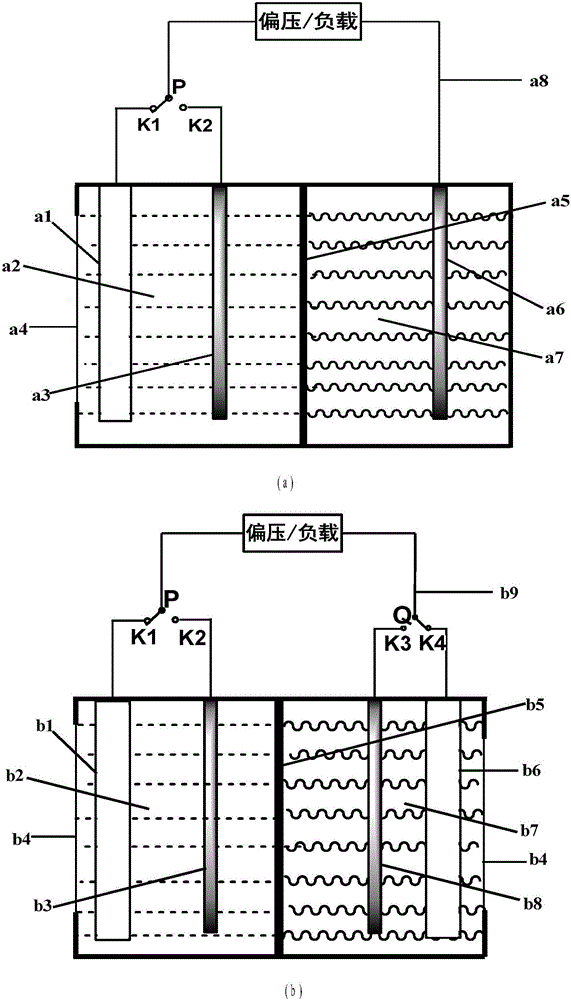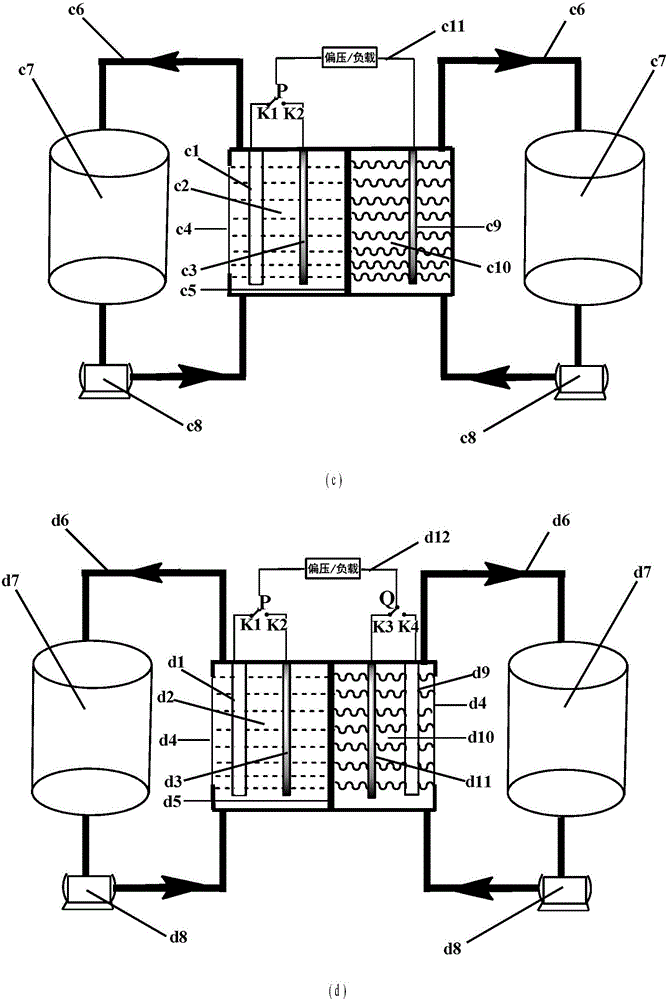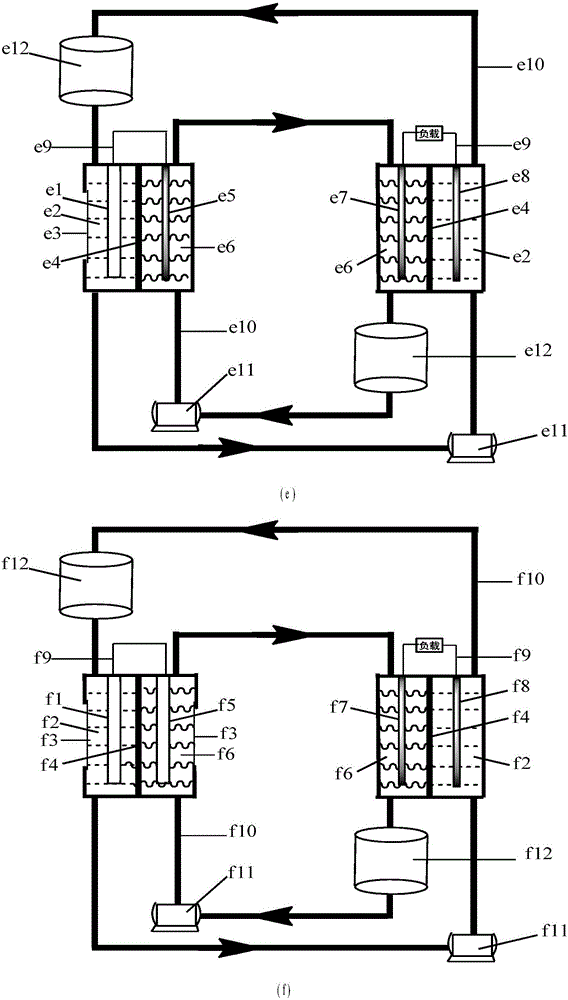Water-soluble fast reaction kinetics couple-based photoelectrochemical energy storage battery
A photoelectrochemical and energy storage battery technology, applied in solar cells, electrochemical generators, circuits, etc., can solve the problems of low battery discharge power, low solar energy conversion rate, and high electrode cost, so as to improve utilization and capture. efficiency, the effect of reducing the activation energy of the reaction
- Summary
- Abstract
- Description
- Claims
- Application Information
AI Technical Summary
Problems solved by technology
Method used
Image
Examples
Embodiment 1
[0044] In this example, Pt-modified and modified n-Si is used as the photoanode, and AM 1.5G 100mW / cm 2 As the light source, the photoanode was investigated at 0.2mol / L HBr+1.0mol / L H 2 SO 4 PEC activity in solution, as figure 2 As shown, the obtained photocurrent is as high as 34mA / cm 2 , The conversion rate of solar energy to chemical energy in the PEC bromine oxidation process is 11.5%. In the PEC reaction, H 2 o 2 It is often used as a probe molecule to measure the utilization rate of photogenerated carriers on the surface of the photoelectrode. image 3 Given the photoanode at 0.2mol / L HBr+1.0mol / L H 2 SO 4 and 0.2mol / L H 2 o 2+1.0mol / L H 2 SO 4 The ratio of the photocurrent at different potentials in the solution, the ratio of the two in the test potential range JHBr / JH 2 o 2 Both are higher than 1, indicating that the utilization rate of the photogenerated carriers on the surface of the photoanode is almost 100% in the solution containing HBr.
[0045] In...
Embodiment 2
[0048] In this embodiment, a single-junction amorphous silicon film is used as a photocathode, and catechol-4-sulfonic acid (BQ4SH 2 ) as the positive electrode active material, 9,10-anthraquinone-2-sulfonic acid (AQ2S) as the negative electrode active material, and carbon cloth as the positive electrode and the counter electrode in the negative electrode chamber. figure 1 The static photoelectrochemical energy storage battery shown in (a), in which the composition of the positive electrode electrolyte is 0.001mol / LBQ4SH 2 +1.0mol / L H 2 SO 4 , the composition of negative electrode electrolyte is 0.001mol / L AQ2S+1.0mol / L H 2 SO 4 , The positive and negative electrolytes are separated by nafion 117 membrane. Light charging process, using AM 1.5G 100mW / cm 2 The light intensity was used to illuminate, and the photocathode was connected to the carbon cloth counter electrode in the positive chamber. No external bias was applied during the charging process, and the charging time...
Embodiment 3
[0055] In this embodiment, n-GaAs is used as the photoanode, the amorphous silicon film is used as the photocathode, HBr is used as the positive electrode active material, and silicotungstic acid (H 4 [SiW 12 o 40 ]) as the negative active material, with multi-walled carbon nanotubes as the counter electrode in the positive and negative chambers, construct such figure 1 The static photoelectrochemical energy storage battery shown in (b), wherein the composition of the positive electrode electrolyte is 1.0mol / L HBr+1.0mol / LH 2 SO 4 , the composition of negative electrode electrolyte is 0.5mol / L H 4 [SiW 12 o 40 ]+1.0mol / LH 2 SO 4 , the positive and negative electrolytes are separated by nafion 115 membrane; the surface of the photoanode is modified with Pt co-catalyst, and the effective area is 0.35cm 2 ; The surface of the photocathode is modified with a carbon layer co-catalyst, and the effective area is 0.3cm 2 . Light charging process, using AM 1.5G 100mW / cm 2 Il...
PUM
| Property | Measurement | Unit |
|---|---|---|
| electrical conductivity | aaaaa | aaaaa |
Abstract
Description
Claims
Application Information
 Login to View More
Login to View More - R&D
- Intellectual Property
- Life Sciences
- Materials
- Tech Scout
- Unparalleled Data Quality
- Higher Quality Content
- 60% Fewer Hallucinations
Browse by: Latest US Patents, China's latest patents, Technical Efficacy Thesaurus, Application Domain, Technology Topic, Popular Technical Reports.
© 2025 PatSnap. All rights reserved.Legal|Privacy policy|Modern Slavery Act Transparency Statement|Sitemap|About US| Contact US: help@patsnap.com



